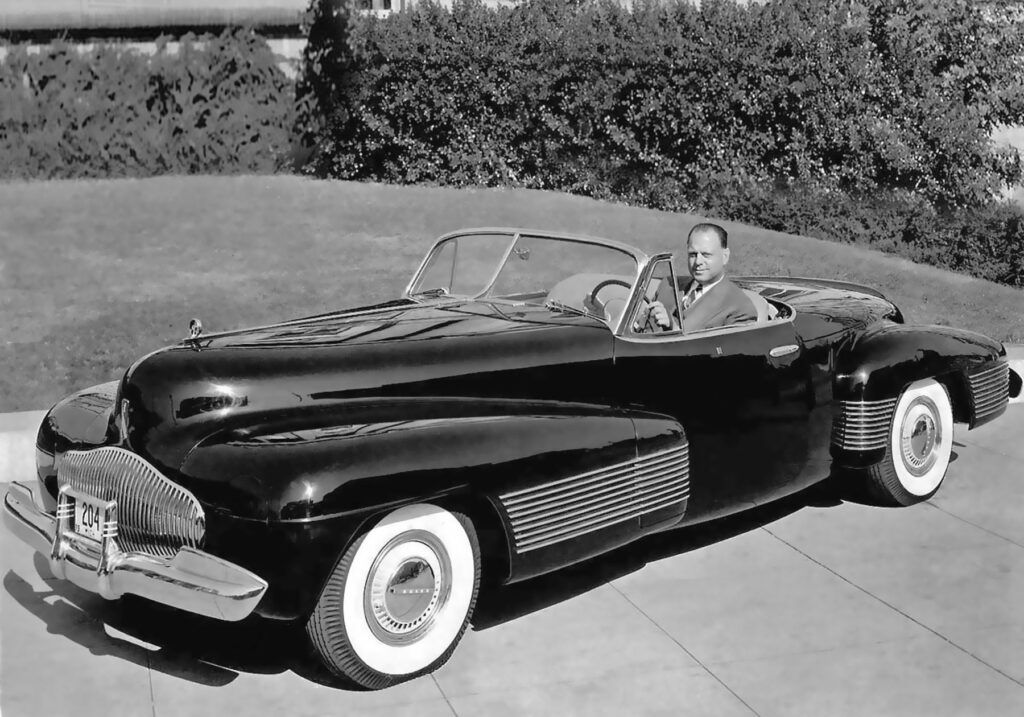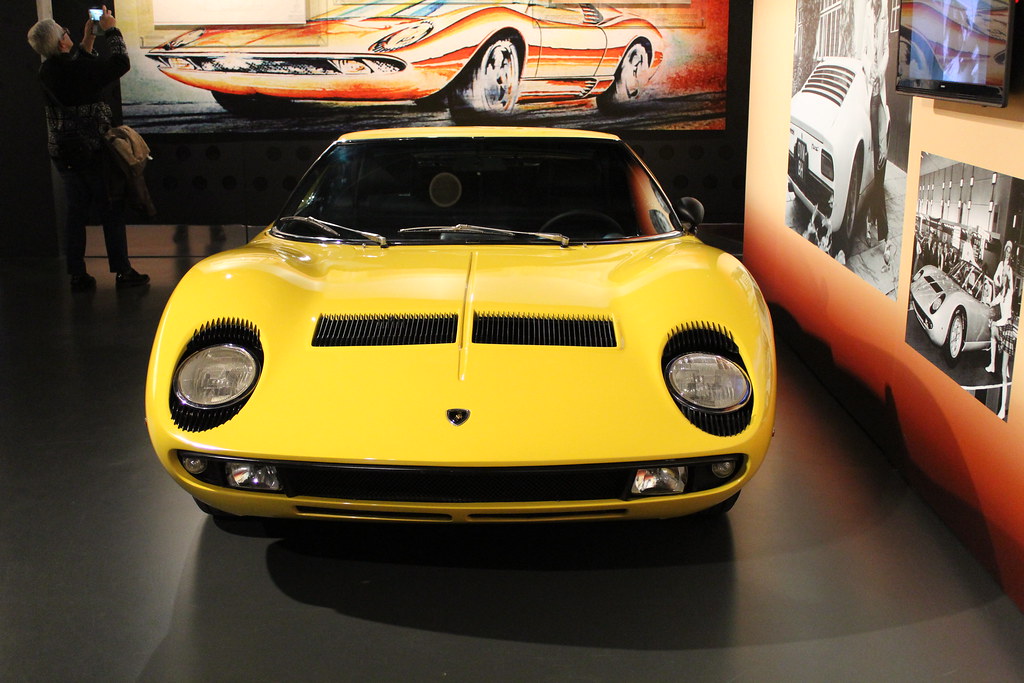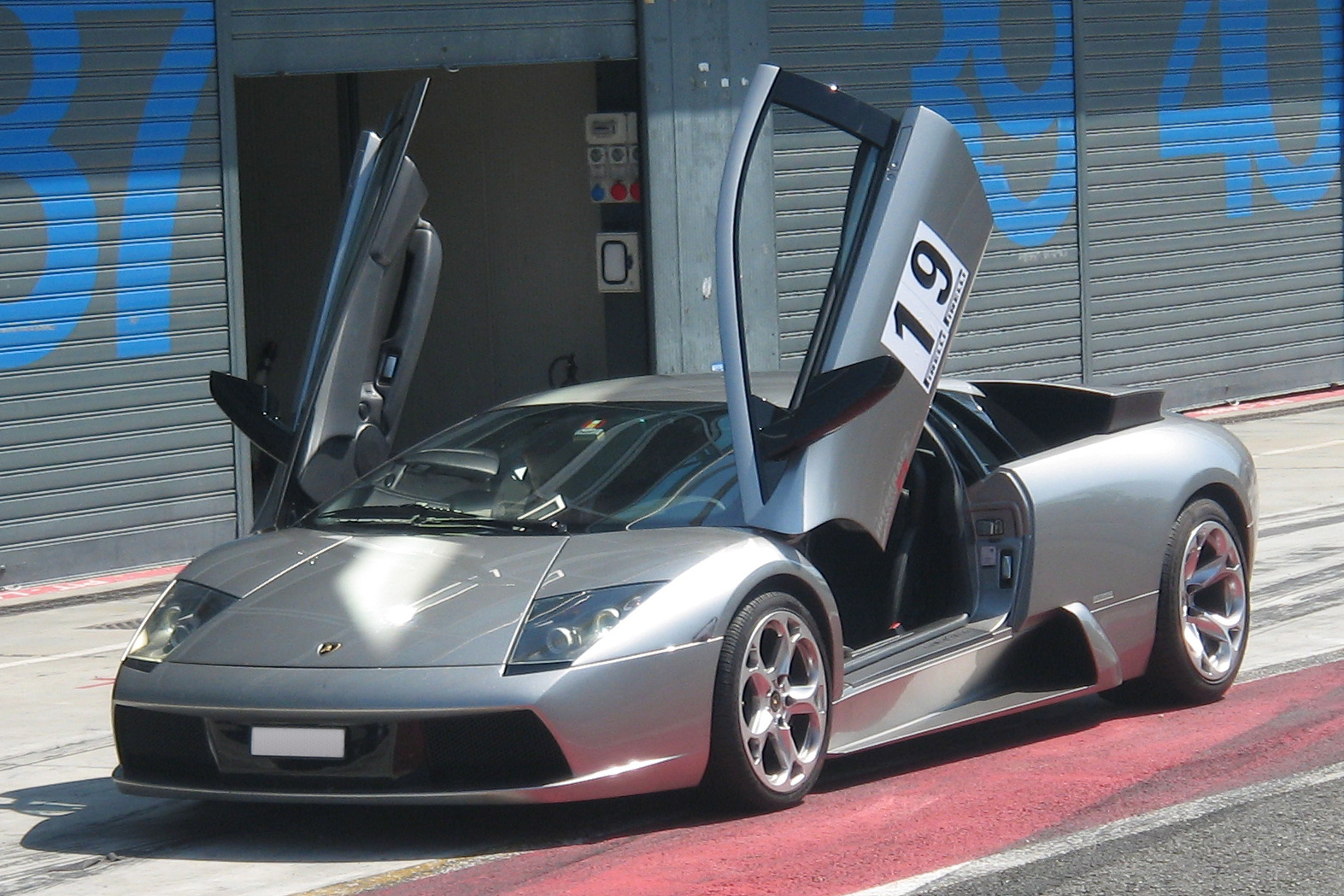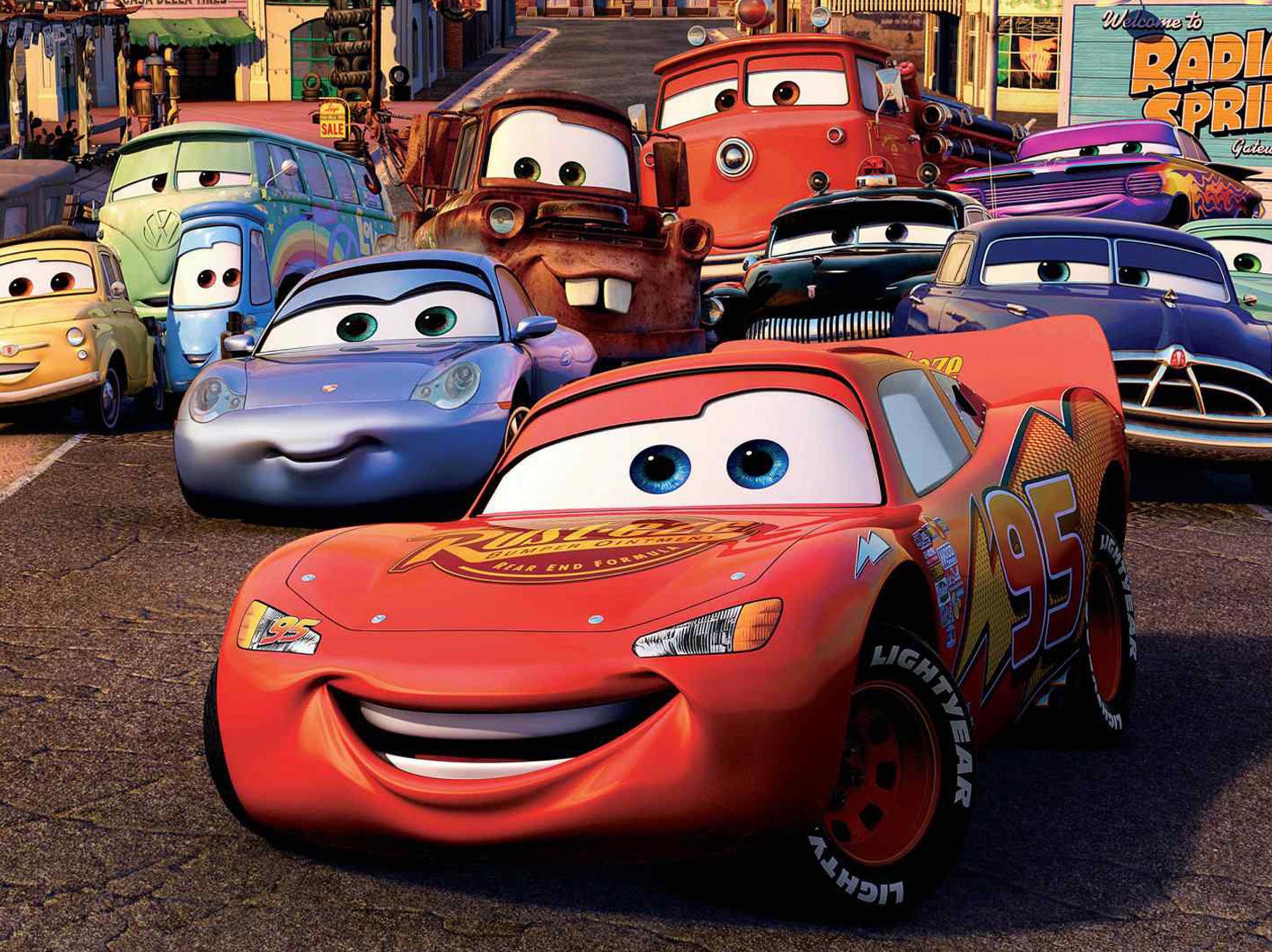
The journey of the automobile is a captivating saga, one that transcends mere mechanics to embrace the realm of art, culture, and profound human ingenuity. For nearly 140 years, cars have evolved from nascent curiosities into indispensable machines. They have fundamentally reshaped our landscapes, our daily routines, and our very concept of freedom. It is within this grand narrative that a select group of visionaries emerge—the car designers who, with a stroke of genius and an unwavering commitment to craft, transformed metal, glass, and rubber into rolling sculptures that captured the imagination of generations.
The 20th century, in particular, stands as a crucible of automotive innovation, a hundred years where cars matured into the sophisticated, high-performance, and aesthetically compelling machines we recognize today. This era saw the birth of entire design philosophies and the rise of iconic brands. It also witnessed the creation of vehicles that became enduring symbols of their time. These designers were not just stylists; they were architects of desire, engineers of dreams, and pivotal figures whose contributions paved the way for the advanced automobiles that continue to define our modern world.
Join us as we embark on an exclusive expedition through the careers of 15 of the most influential car designers of the 20th century. We’ll delve into their groundbreaking philosophies, examine their most celebrated creations, and uncover the lasting legacies that have cemented their places in automotive history. In this first part of our series, we shine a spotlight on seven titans whose foresight and artistry laid crucial foundations, setting standards for elegance, performance, and mass appeal that resonate deeply even today.

1. **Harley Earl**Harley Earl, a name synonymous with American automotive glamour, stands as a towering figure often credited with being the “father of automotive design.” His revolutionary approach to vehicle aesthetics, developed during his extensive tenure at General Motors, fundamentally reshaped the way cars were conceived and marketed. Earl understood that a car was more than just transportation; it was a statement, a reflection of personal aspiration and societal trends.
It was Earl who masterfully introduced the concept of “dynamic obsolescence,” a brilliant strategic move that emphasized annual model changes to continuously stimulate consumer demand. This wasn’t merely about superficial updates. It was about creating a constant sense of novelty and progress, encouraging drivers to desire the latest iteration, thereby driving sales and fostering a vibrant, evolving automotive culture.
His portfolio is adorned with some of the most recognizable and beloved American cars of the mid-20th century. The Chevrolet Corvette, a perennial symbol of American sports car prowess, is a testament to his groundbreaking vision. Similarly, the Cadillac Eldorado, with its commanding presence and distinctive styling, set an undeniable standard for luxury and sophistication. Earl’s designs didn’t just adorn the roads; they became benchmarks, defining the very essence of American automotive styling for decades to come.
Read more about: The Designer’s ‘Shame’ or Strategic Brilliance? Unpacking 9 Aesthetic Choices That Masterfully Slash Production Costs

2. **Giorgetto Giugiaro**To speak of Giorgetto Giugiaro is to speak of an architect whose designs collectively put over 60 million cars on the road, earning him the prestigious title of “Car Designer of the Century.” His career, spanning an impressive 64 years and counting, is a testament to a prolific genius who effortlessly blended artistry with mass-market appeal. From unique exotic vehicles to accessible utility models, Giugiaro’s influence on modern automobiles is virtually unparalleled, making him arguably the 20th century’s most impactful designer.
Giugiaro’s journey began not from an initial passion for cars, but as an extension of a broader creative process, a path shaped by his father’s keen observation of his technical inclinations. Joining FIAT at the tender age of 17, he quickly absorbed invaluable experience, later becoming chief designer at Bertone at just 22. This early immersion in Italy’s vibrant coachbuilding scene, including stints at Ghia where he designed the beautiful Maserati Ghibli and the iconic De Tomaso Mangusta, refined his geometric aesthetic and functional practicality, characteristics that would become his signature.
His founding of Italdesign in 1967 marked a pivotal moment, shifting his focus towards mass-produced vehicles—a challenge he found deeply gratifying due to its complex interplay of variables like costs and feasibility. This era famously birthed his “origami period,” characterized by sharp, angular lines, exemplified by the first-generation Volkswagen Golf in 1974. The Golf, affectionately known as the Rabbit in the US, became an automotive phenomenon, influencing generations of car design and solidifying Giugiaro’s reputation for creating resounding success stories in the industry. He once humbly declined a “design by Giugiaro” badge for every Golf, stating, “Cars are not artworks. Art is prestigious, but cars are not.”
Beyond the mass market, Giugiaro’s bold lines also found their way into cinematic immortality. The Lotus Esprit, designed in 1976, famously transformed into a submarine for James Bond in “The Spy Who Loved Me,” later inspiring Elon Musk to acquire the film prop. Then came the DeLorean in 1981, a wedge-shaped coupe with a distinctive stainless steel body and gullwing doors, which achieved iconic status as Marty McFly’s time machine in “Back to the Future.” Giugiaro, reflecting on the DeLorean’s unpainted look driven by cost-saving decisions, humbly stated, “I’m glad when someone remembers that I designed it.”
Giugiaro’s expansive creativity wasn’t limited to cars. Through Italdesign’s industrial division, he ventured into designing everything from the Nikon F5 camera to trains for the Riyadh metro, and even a unique pasta shape named Marille. He viewed these diverse projects as “a great way to fill the dead times between car projects,” finding liberation in escaping the “normative hell of cars.” Even now, in his eighties and having sold Italdesign, he continues to innovate with GFG Style, embodying the spirit of a true design maestro.
Read more about: Instant Disappointment: 10 Sports Cars That Failed to Live Up to the Hype Off the Assembly Line.

3. **Marcello Gandini**Marcello Gandini is an undisputed titan of 20th-century automotive design, whose avant-garde creations for Bertone redefined what a supercar could look like. His vision transcended mere functionality, pushing the boundaries of styling to craft vehicles that were as much art installations as they were high-performance machines. Gandini’s legacy is inextricably linked with some of the most visually dramatic and technologically ambitious cars ever to grace the road, solidifying his stature in automotive history.
His portfolio reads like a roll call of automotive legends, each a testament to his daring aesthetic. The Lamborghini Miura, often cited as the progenitor of the modern supercar, showcased a sensuous, mid-engined profile that captivated enthusiasts worldwide. Following this masterpiece, Gandini unleashed the Lamborghini Countach, a breathtakingly futuristic wedge that became the quintessential bedroom poster car of a generation. Its angularity and scissor doors were instantly recognizable and utterly revolutionary.
Beyond the realm of hyper-performance, Gandini’s genius also sculpted the Lancia Stratos, a rally icon whose aggressive, compact form belied its incredible capabilities. His influence extended to more accessible, yet equally distinctive, vehicles like the Fiat X1/9 and the Citroën BX. Each of these designs, whether a flamboyant supercar or a practical hatchback, bore Gandini’s unmistakable stamp of innovation, securing his place as one of the most influential and boundary-pushing car designers ever.
Read more about: Beware: These Classic Cars Are Not Worth Restoring – An Expert Guide for Enthusiasts

4. **Sergio Pininfarina**Sergio Pininfarina, as the esteemed chairman of Pinin Farina S.p.A., played a truly pivotal role in shaping the very essence of the Italian automotive industry. Under his guiding hand, the firm became a beacon of elegance and aerodynamic mastery, forging collaborations with some of the most illustrious names in motoring. His contributions ensured that Italian design remained at the forefront of global automotive excellence, setting trends for decades.
The Pininfarina name became synonymous with breathtaking beauty through its partnerships with marques like Ferrari, Alfa Romeo, and Maserati. These collaborations yielded a succession of vehicles that are widely celebrated as some of the most exquisitely designed cars ever produced. Each model bore the hallmark of Pininfarina’s timeless aesthetic, characterized by graceful curves and meticulously sculpted aerodynamic shapes that transcended mere function to become objects of profound desire.
Sergio Pininfarina’s unwavering commitment to design perfection and his profound understanding of proportion and form allowed his firm to craft vehicles that were not just fashionable for a season, but enduring icons. His vision helped define what “Italian automotive excellence” truly meant, cementing a legacy built on sensuous lines, unparalleled craftsmanship, and a relentless pursuit of beauty that continues to inspire reverence among automotive aficionados worldwide.
Read more about: Beyond the Gavel: What Vintage Car Auctions Reveal About Today’s Shifting Collector Market

5. **William Lyons**Sir William Lyons, the visionary co-founder of Jaguar Cars, left an indelible and distinctly British mark on automotive design, creating vehicles that became epitomes of luxury and performance. Under his astute leadership, Jaguar evolved into a global powerhouse, renowned for its elegant aesthetics and thrilling driving dynamics. Lyons’ unique blend of engineering acumen and artistic sensibility set his creations apart in a competitive landscape, captivating a global audience.
The legendary models that emerged under his guidance are now cherished classics, symbols of British automotive prowess. The XK120, a groundbreaking sports car, captivated the world with its stunning lines and impressive speed, establishing Jaguar’s pedigree. It paved the way for the iconic E-Type, a vehicle often hailed as one of the most beautiful cars ever made, whose sleek, aerodynamic form and exhilarating performance became legendary in motoring circles.
Further cementing Jaguar’s reputation for refined luxury was the XJ6, a saloon that combined sophisticated comfort with unmistakable style. Lyons’ meticulous attention to detail, coupled with his keen eye for aesthetics and engineering excellence, was instrumental in forging Jaguar’s identity. His leadership not only produced a string of highly desirable vehicles but also solidified Jaguar’s standing as one of the world’s premier luxury car manufacturers, a legacy that continues to resonate with passion.
Read more about: Massive Ford Recall Alert: Engine Failure Risk for Bronco, F-150, Explorer, and Lincoln models

6. **Walter de Silva**Walter de Silva is a name revered in the automotive design world, particularly for his transformative impact during his tenure as the head of design at Volkswagen Group. In this expansive role, de Silva oversaw the styling direction for an impressive array of prestigious brands, including Audi, Volkswagen, and Lamborghini, demonstrating a remarkable versatility and a profound understanding of diverse brand identities and market demands.
His extensive portfolio is graced with some truly iconic vehicles that embody his distinctive design philosophy. The Audi R8, a mid-engined supercar, showcased a striking blend of performance and sophisticated aesthetics, becoming an instant classic and a benchmark for its segment. Similarly, de Silva’s touch is evident in the modern Volkswagen Golf, a car that continues its legacy as a global benchmark for compact car design, balancing practicality with understated elegance.
Furthermore, the aggressive yet refined lines of the Lamborghini Gallardo bear his hallmark, demonstrating his ability to infuse powerful performance machines with an almost surgical precision in design. De Silva’s core design philosophy champions simplicity, elegance, and an unwavering attention to detail. This approach consistently yielded cars that were both timeless in their appeal and thoroughly contemporary in their execution, solidifying his reputation as a master of understated automotive artistry.
Read more about: Remember the ’00s? These 13 V10 Engines Were the Absolute Rulers of Sound and the Motorsport Circuit.

7. **J Mays**J Mays stands as a veteran luminary in car design, celebrated for his immensely influential work at Ford Motor Company, where he held the significant position of chief creative officer. His tenure at Ford was marked by a period of profound redefinition for the brand. He spearheaded the design direction for models that not only captivated the market but also breathed new life into an American automotive giant. Mays possessed a unique ability to blend heritage with forward-thinking innovation.
Under his creative leadership, a string of iconic models emerged, each contributing to a renewed and invigorated Ford identity. The Ford GT, a modern homage to a racing legend, exemplified his commitment to bold styling and high performance, thrilling enthusiasts and critics alike with its distinctive form. His influence also extended to the perennial favorite, the Ford Mustang, ensuring that this legendary muscle car continued to evolve while respecting its storied past and core identity.
Even more widely, the Ford Fusion, a key player in the sedan market, showcased Mays’ emphasis on delivering contemporary design and refined aesthetics to a broader audience. His steadfast dedication to bold styling, continuous innovation, and impeccable craftsmanship has etched an enduring legacy onto the American automotive industry. Mays’ work proved that traditional brands could not only adapt but thrive by embracing modern design principles while honoring their foundational spirit.
The 20th century was a canvas for automotive brilliance, a period where visionary designers, through sheer audacity and an unyielding pursuit of innovation, redefined the very essence of the automobile. Having explored the titans who laid the groundwork, we now turn our attention to another echelon of extraordinary talents—eight designers whose profound influence continued to challenge conventions, revitalize revered brands, and ultimately shape the contemporary design philosophies that still resonate across the automotive landscape today. Their work embodies a sophisticated blend of artistry and engineering, pushing boundaries and solidifying the car’s place as an enduring icon of style and progress.
Read more about: Your Ultimate Guide: 14 Underrated Grocery Store Wines Essential for Dinner Hosts Tonight

8. **Chris Bangle**Chris Bangle stands as a truly controversial figure in automotive design, known for his polarizing designs during his tenure as the head of design at BMW Group. His approach was a deliberate departure from the brand’s established aesthetic, injecting a bold and often confrontational styling language that sought to challenge consumer expectations and invigorate the luxury segment with a fresh, sculptural dynamism.
During his time at BMW, Bangle introduced unconventional styling elements that were both praised for their daring originality and critiqued for their perceived break with tradition. Models like the E65 7 Series and the E60 5 Series showcased his distinctive ‘flame surfacing’ philosophy, characterized by complex curves and intersecting planes that created unique light reflections and a sense of movement, fundamentally altering BMW’s visual identity.
Though his designs initially divided opinion among loyalists and critics, sparking widespread debate across the industry, Bangle’s bold methodology proved to be a catalyst for change. He challenged conventions and unequivocally pushed the boundaries of creativity in automotive design, prompting a reevaluation of what a modern luxury car could and should look like. His willingness to innovate, even at the risk of controversy, paved the way for more expressive forms.
Ultimately, Bangle’s legacy is that of an iconoclast who, despite the initial uproar, laid the groundwork for a new era of automotive design characterized by more sculptural and emotionally resonant forms. His impact transcended BMW, influencing subsequent generations of designers by demonstrating that true innovation sometimes demands a radical break from the past, forging new paths forward for the industry.
Read more about: From Sketchpad to Legend: The 14 Coolest Concept Cars That Almost Changed the Automotive World

9. **Ian Callum**Ian Callum is celebrated for his transformative tenure as the design director at Jaguar, a period during which he masterfully revitalized the brand’s image. His approach was characterized by a sensitive yet bold modern interpretation of classic Jaguar designs, successfully blending the marque’s rich heritage with contemporary aesthetics to appeal to a broader and younger luxury audience.
Under his astute leadership, Jaguar produced a string of iconic models that swiftly redefined British luxury. The Jaguar F-Type, a potent and exquisitely sculpted sports car, along with the sophisticated XF and the elegant XJ, became hallmarks of his distinctive design language. These vehicles were lauded for their ability to seamlessly fuse exhilarating performance with opulent luxury and an unmistakable elegance.
Callum’s designs resonated deeply with automotive enthusiasts and critics alike, earning acclaim for their clean lines and dynamic proportions. He ensured that while the cars looked distinctly modern, they retained the intrinsic grace and sporting spirit that had always defined Jaguar, proving that innovation could coexist harmoniously with a storied past.
His bold and dynamic design philosophy not only helped Jaguar appeal to a new generation of luxury car buyers but also ensured the brand maintained its prestige and heritage in an increasingly competitive global market. Callum’s vision helped cement Jaguar’s position, redefining what it meant to be a modern British luxury automobile, celebrated globally for its fusion of classic aesthetics and cutting-edge performance.
Read more about: 13 Underappreciated Wagons: Unearthing Automotive Utility’s Hidden Gems

10. **Peter Schreyer**Peter Schreyer is widely credited with profoundly transforming the Kia brand through the introduction of his distinctive design language, most famously exemplified by ‘the tiger nose grille.’ As the president and chief design officer at Kia Motors, Schreyer’s arrival marked a pivotal moment, shifting the brand’s perception from merely a budget-friendly option to a mainstream competitor with undeniable stylistic appeal.
His visionary leadership oversaw the development of a range of award-winning models that reshaped Kia’s lineup and significantly elevated its global standing. The Kia Optima, Sportage, and Stinger are prime examples of his ability to craft vehicles that were both aesthetically pleasing and commercially successful, demonstrating a sophisticated blend of style, quality, and undeniable value.
Schreyer’s approachable yet sophisticated designs breathed new life into Kia, making the brand’s vehicles visually appealing and desirable to a wider demographic. He brought a sense of European elegance and cohesion to Kia’s product range, which had previously lacked a unified design identity, thereby creating a strong and recognizable brand image that resonated with consumers worldwide.
Beyond his transformative work at Kia, Schreyer’s influence extends to his prior contributions to Audi and Volkswagen designs, where he honed his craft and developed the keen eye for detail that would later define Kia’s resurgence. His strategic integration of a signature grille and consistent design elements across the model range solidified his reputation as a master of brand identity and market elevation, proving design as a powerful business tool.
Read more about: Electrifying the Family Ride: Are 2025 Electric Minivans Finally Practical and Poised to Reshape Your Travel Experience?

11. **Henrik Fisker**Henrik Fisker, the Danish-American designer, has left an indelible mark on the automotive landscape, particularly noted for his work on iconic luxury and performance vehicles. His keen eye for blending powerful aesthetics with opulent interiors is evident in legendary cars such as the sleek BMW Z8 and the quintessentially elegant Aston Martin DB9, both of which stand as benchmarks of sophisticated design.
As the visionary founder of Fisker Automotive, he embarked on an ambitious journey to revolutionize the electric vehicle market, aiming to introduce sustainable luxury cars that didn’t compromise on style or performance. This endeavor notably birthed the Fisker Karma, a groundbreaking plug-in hybrid electric vehicle that, despite facing subsequent challenges, was ahead of its time in its fusion of environmental consciousness and high-end automotive design.
Fisker’s innovative approach to design and technology, even in the face of the Karma’s commercial difficulties, significantly paved the way for future advancements in electric mobility. He demonstrated that electric vehicles could be not just efficient but also desirable, luxurious, and visually compelling, thus inspiring a new generation of designers and manufacturers to embrace sustainable automotive solutions with aesthetic flair.
His career underscores a persistent drive to blend performance, luxury, and environmental responsibility, pushing the boundaries of what consumers expect from their vehicles. Fisker’s contributions have undeniably broadened the scope of automotive design, proving that a commitment to bold, futuristic styling can coexist with pioneering sustainable technologies, marking him as a forward-thinking force in the industry.
Read more about: Shocker Alert: These 10 Once-Lauded Models Transform Into Electrical Nightmares After a Decade

12. **Shiro Nakamura**Shiro Nakamura is a celebrated Japanese car designer, best known for his transformative tenure at Nissan, where he served with distinction as the senior vice president and chief creative officer. Under his visionary leadership, Nissan embarked on a new design trajectory, successfully fusing traditional Japanese aesthetics with prevailing global trends to create a distinct and powerful brand identity.
His period at Nissan was marked by the introduction of several groundbreaking models that became instantly recognizable and highly influential. The formidable Nissan GT-R, a high-performance legend, the dynamically styled 350Z, and the pioneering all-electric Leaf are just a few examples that showcase his ability to craft vehicles that were both innovative and culturally resonant, appealing to a diverse international audience.
Nakamura’s design philosophy emphasized bold, often provocative aesthetics that challenged traditional vehicle design norms, ensuring Nissan’s vehicles stood out in a crowded market. He championed a fusion of art and engineering, allowing cars to express a strong personality while maintaining an inherent practicality and technological sophistication. This approach solidified Nissan’s reputation for innovative design.
His legacy at Nissan is one of bold reinvention, proving that a commitment to distinctive styling, rooted in a unique cultural perspective yet universally appealing, could drive significant market presence and brand recognition. Nakamura’s contributions cemented his place as a pivotal figure who broadened the global understanding of Japanese automotive design, inspiring creativity across the industry.

13. **Franz von Holzhausen**Franz von Holzhausen, the American car designer, holds a pivotal and influential role at Tesla, where he serves as the chief designer. His work has been instrumental in shaping the minimalist and futuristic design language that has become synonymous with Tesla’s revolutionary electric vehicles, fundamentally redefining the aesthetics of electric mobility for a global audience.
Under his creative direction, iconic models such as the sleek Model S, the versatile Model X, and the widely accessible Model 3 came to fruition. These vehicles distinguished themselves not only through their groundbreaking electric powertrains but also through their clean, uncluttered forms and sophisticated technological integration, establishing a new visual benchmark for electric cars.
Von Holzhausen’s design philosophy at Tesla championed simplicity, aerodynamic efficiency, and an unwavering focus on the user experience, often allowing technology to dictate form in an elegant manner. His commitment to these principles has resulted in vehicles that are not merely modes of transport but aspirational symbols of sustainability, innovation, and modern luxury, fundamentally changing public perception of electric cars.
The impact of his designs extends far beyond mere aesthetics; they have played a crucial role in Tesla’s rapid ascent as a global automotive leader. By making electric cars desirable and visually compelling, von Holzhausen has not only elevated the Tesla brand but also significantly contributed to accelerating the world’s transition to sustainable energy, marking him as a true visionary in contemporary automotive design.
Read more about: Shocker Alert: These 10 Once-Lauded Models Transform Into Electrical Nightmares After a Decade

14. **Luc Donckerwolke**Luc Donckerwolke, a distinguished Belgian car designer, has garnered immense acclaim for his influential work across a spectrum of prestigious luxury and performance brands, including Lamborghini, Bentley, and more recently, Genesis and Hyundai. His career is characterized by a remarkable ability to craft vehicles that epitomize both raw power and refined elegance, pushing the boundaries of automotive design.
He played a crucial role in shaping the design language of Lamborghini’s modern lineup, leaving an indelible mark on some of the most dramatic supercars ever conceived. The aggressive yet sophisticated lines of the Murciélago, the instantly recognizable Gallardo, and the breathtaking Aventador all bear his distinctive design signature, embodying the unbridled spirit of Italian supercars with cutting-edge aesthetics.
Beyond Lamborghini, Donckerwolke’s influence is evident in the opulent and commanding presence of vehicles like the Bentley Flying Spur, where he masterfully blended traditional luxury with contemporary dynamism. His designs consistently showcase a unique fusion of performance and luxury, characterized by bold and aggressive forms that simultaneously achieve exceptional aerodynamic efficiency, reflecting a deep understanding of high-end automotive engineering.
Donckerwolke’s visionary approach ensures that his creations are not just visually striking but also functionally superior, defining new standards in automotive artistry. His ability to adapt his distinctive style to diverse brand identities, while always maintaining an uncompromising commitment to excellence, firmly establishes him as one of the most impactful and versatile designers in the modern automotive era.
Read more about: Remember the ’00s? These 13 V10 Engines Were the Absolute Rulers of Sound and the Motorsport Circuit.

15. **Adrian van Hooydonk**Adrian van Hooydonk, the highly influential Dutch car designer, currently holds the esteemed position of head of design at BMW, where his leadership has ushered in a distinctive new design language for the iconic German marque. His vision has been pivotal in steering BMW’s aesthetic direction, ensuring the brand continues to lead in the luxury and performance segments with contemporary and dynamic forms.
Under his guidance, BMW has introduced a design philosophy characterized by meticulously sculpted surfaces, sharp, precise lines, and dynamic proportions that give the vehicles a sense of powerful athleticism and forward motion. This evolution represents a sophisticated blend of BMW’s traditional design cues with a fresh, modern sensibility, ensuring brand recognition while embracing innovation.
Van Hooydonk’s commitment to thoughtful design is evident in the seamless integration of functionality with aesthetic appeal, creating cars that are both visually captivating and ergonomically superior. He understands the delicate balance required to evolve a brand with such a strong heritage, carefully pushing boundaries without alienating its loyal customer base, all while attracting new enthusiasts.
His visionary approach to car design has been instrumental in helping BMW maintain its formidable position as a global leader in luxury and performance automobiles. By consistently delivering vehicles that exude sophistication, cutting-edge technology, and an unmistakable driving presence, van Hooydonk continues to shape the future of BMW, ensuring its legacy of design excellence endures and adapts to the evolving demands of the 21st century.
Read more about: Beyond Steel and Silicon: How Revolutionary Materials Like Bamboo Are Redefining the Automotive Future
The 20th century was an unparalleled epoch of automotive design, a period where genius flowed freely from the minds of these visionary maestros. From the audacious statements of Chris Bangle to the refined elegance of Ian Callum, and the groundbreaking electric futurism championed by Franz von Holzhausen, each designer profiled here, alongside their foundational counterparts in the preceding section, contributed an indispensable chapter to the automobile’s enduring story. Their creations transcended mere utility, becoming cultural touchstones, symbols of progress, and objects of desire that continue to inspire awe. As we accelerate into a new era, the legacies of these 15 influential designers serve as a powerful testament to the transformative power of artistry and innovation, forever etched into the very fabric of our motoring world. Their work reminds us that a car is never just a car; it is a masterpiece of human ingenuity, shaped by hands that dared to dream.



